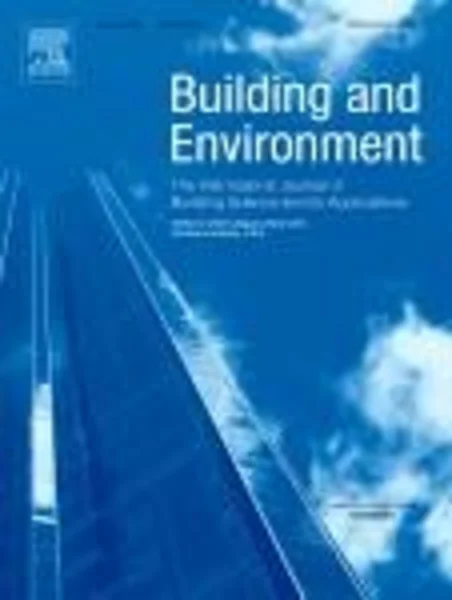-
chemical and microbial effects of atmospheric particles on the performance of steep-slope roofing materials
جزئیات بیشتر مقاله- تاریخ ارائه: 1390/01/01
- تاریخ انتشار در تی پی بین: 1390/01/01
- تعداد بازدید: 560
- تعداد پرسش و پاسخ ها: 0
- شماره تماس دبیرخانه رویداد: -
the reflectivity of a roof is a critical component in design of strategy to reduce overall building energy usage. airborne particulate matter that settles on a roof can either reflect or absorb incoming solar radiation. the light scattering and absorption processes occur within a few microns of the surface that affects the solar reflectance of the roof. the long-term loss of roof reflectivity appears driven by the ability of the atmospheric particulate matter to cling onto the roof and resist being washed off by wind and or rain. contaminants collected from samples of roof products exposed at seven california sites for about one and a half years were analysed for major and trace elements and carbons to assist characterization of the chemical profile of the atmospheric particles that soil each roof sample. the chemical composition of the accumulated particles was very similar across the state of california; there was no clear distinction from one region to another. elemental carbon did not contribute significantly to the loss of solar reflectance as initially expected. dust particles and organic carbon compensated for the loss of solar reflectance due to elemental carbon possibly because some crystalline forms of these elements were light reflecting and contributed to the solar reflectance. differences in microbial communities and biomass were seen between the various materials. abundance of microbial biomass on roof tiles appears to be related to the composition/surface structure of the tile. cyanobacteria or fungi represent the dominant player.
مقالات جدیدترین رویدادها
-
استفاده از تحلیل اهمیت-عملکرد در ارائه الگوی مدیریت خلاقیت سازمانی و ارائه راهکار جهت بهبود
-
بررسی تاثیر ارزش وجوه نقد مازاد بر ساختار سرمایه شرکت های پذیرفته شده در بورس اوراق بهادار تهران
-
بررسی تأثیر سطح افشای ریسک بر قرارداد بدهی شرکت های پذیرفته شده در بورس اوراق بهادار تهران
-
بررسی تأثیر رتبه بندی اعتباری مبتنی بر مدل امتیاز بازار نوظهور بر نقد شوندگی سهام با تأکید بر خصوصی سازی شرکت ها
-
تأثیر آمیخته بازاریابی پوشاک ایرانی بر تصویر ذهنی مشتری پوشاک ایرانی (هاکوپیان)
-
بررسی رابطه میان مهارت های زندگی و راهبردهای مقابله ای در دانش آموزان
-
مقایسه پروفیل سرعت موج برشی لایه های زیر سطحی حاصل از روش dht با روش های sasw و masw (مطالعه موردی در دانشگاه صنعتی شاهرود)
-
تصادفات منجر به فوت و برآورد نسبی اتلاف سرمایه ی ملّی
-
mechanical behaviour and thermal conductivity of mortars containing waste rubber particles
-
phylogenetic relations of the dinoflagellate gymnodinium baicalense from lake baikal
مقالات جدیدترین ژورنال ها
-
مدیریت و بررسی افسردگی دانش آموزان دختر مقطع متوسطه دوم در دروان کرونا در شهرستان دزفول
-
مدیریت و بررسی خرد سیاسی در اندیشه ی فردوسی در ادب ایران
-
واکاوی و مدیریت توصیفی قلمدان(جاکلیدی)ضریح در موزه آستان قدس رضوی
-
بررسی تاثیر خلاقیت، دانش و انگیزه کارکنان بر پیشنهادات نوآورانه کارکنان ( مورد مطالعه: هتل های 3 و 4 ستاره استان کرمان)
-
بررسی تاثیر کیفیت سیستم های اطلاعاتی بر تصمیم گیری موفق در شرکتهای تولیدی استان اصفهان (مورد مطالعه: مدیران شرکتهای تولیدی استان اصفهان)
-
عملکرد حضرت علی علیه السلام در دشمن شناسی و رویارویی با دشمنان
-
بررسی نقش هوش مصنوعی در بازسازی بناهای تاریخی ایران
-
قنات قاسم آباد (همدان)، دریچه ایی به معماری زیرزمینی
-
رابطه ویژگی های شخصیتی و بی انضباطی با قلدری دانش آموزان دوره دوم متوسطه
-
motivational factors for the implementation of iso-9001 in construction firms of pakistan




سوال خود را در مورد این مقاله مطرح نمایید :